Free RTF to TXT Online Converter
Our RTF to TXT converter tool allows you to easily convert your RTF documents into plain text files. Simply upload your RTF file, and the converter will process it quickly and accurately. Download your TXT file in seconds, without any hassle or cost.
How to convert RTF to TXT
Use the RTF to TXT converter in just 2 simple steps, or get an API key and programmatically convert thousands of images!
Free Online Converters
Supported Cloud Storage Providers

Why Use File Converters?
File sharing is essential for organizations, and accurate file conversion is key. Filestack’s advanced conversions enable teams to share work without worrying about format compatibility, enhancing productivity and collaboration. Our reliable solution converts any common Microsoft file to PDF while preserving the original format and content.
Explore Beyond RTF to TXT Conversion
GROUP IMAGES INTO A COLLAGE
URL SCREENSHOT
PDF FILE PROCESSING
DOCUMENT DETECTION
VIRUS SCAN & MALWARE DETECTION
GENERATE A QR CODE
Let’s Get Started.
Just One Integration, One Time…
import * as filestack from 'filestack-js';
const client = filestack.init('YOUR API KEY');
client.upload(fileObject).then(data =>console.log(data.url));gem 'filestack'
client = FilestackClient.new('YOUR_API_KEY', security: security_object)
filelink = client.upload(filepath: '/path/to/file')$ composer require --prefer-dist filestack/filestack-php
use Filestack\\FilestackClient;
$client = new FilestackClient('YOUR_API_KEY');
$filelink = $client-upload('/path/to/file');$ pip install filestack-python
from filestack import Client client = Client("")
params = {'mimetype': 'image/png'}
new_filelink = client.upload(filepath="path/to/file", params=params)
print(new_filelink.url)
Frequently Asked Questions
What is RTF?
RTF is a Rich Text Format file that stores text with formatting such as bold, italics, fonts, and colors. Microsoft created RTF for cross-platform compatibility, and the format opens on almost all word processors. RTF keeps document structure intact without relying on proprietary software.
What is TXT?
TXT is a plain text file format that stores unformatted text using basic character encoding. TXT files contain only raw text without fonts, colors, or styling, which makes them lightweight and universally compatible. TXT is widely used for notes, logs, configuration files, and data processing across all systems.
What is the benefits of converting RTF to TXT?
The benefits of converting RTF to TXT include smaller file sizes, simplified content, and universal compatibility. TXT removes formatting, which makes the file easier to process, index, and parse in scripts or applications. Converting RTF to TXT improves readability, speeds up automation, and ensures clean, plain-text output.
How can I programmatically convert RTF to TXT using Filestack Processing API?
Programmatically convert RTF to TXT using the Filestack Processing API by uploading the RTF file, generating a Processing URL, and applying the output=format:txt transformation. Filestack processes the file server-side and returns a clean TXT file that you can store, display, or use in automation workflows.